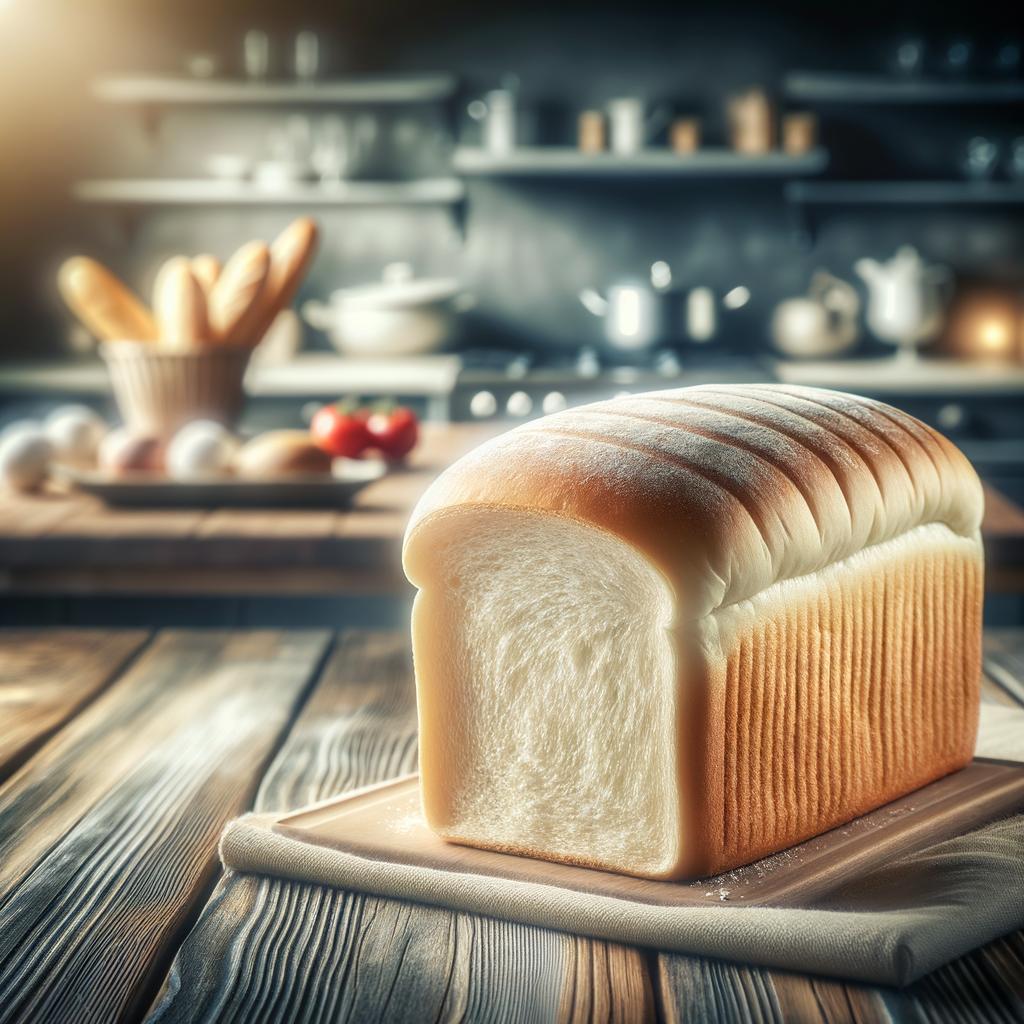Loaf of White Bread

Description White bread, a staple in many households worldwide, is a classic and versatile ingredient. It is a soft, fluffy loaf with a light golden crust, typically sliced into uniform pieces. The texture is tender and slightly elastic, easily yielding to the touch yet sturdy enough to hold a variety of toppings. The flavor is subtly sweet and yeasty, with a comforting aroma that evokes memories of home and hearth. What sets white bread apart from its whole grain counterparts is its refined texture and mild taste, providing a neutral canvas that complements a wide array of flavors.
Primary Uses White bread is a ubiquitous ingredient in many culinary traditions. It is commonly used in sandwiches, from the simple yet comforting peanut butter and jelly to the more elaborate club sandwich. It also serves as a base for various toasts, both sweet and savory, and is a key component in traditional dishes like bread pudding, French toast, and stuffing. Beyond its culinary uses, white bread has also been used as a home remedy to soothe minor burns and to pick up tiny shards of glass.
History The history of white bread is a fascinating journey through time and culture. Originating from ancient Egypt, it was initially a luxury item, affordable only to the elite due to the labor-intensive process of refining wheat. However, with the advent of industrial milling and the invention of the bread-slicing machine in the early 20th century, white bread became accessible to the masses. Despite its evolution over time, white bread has maintained its status as a symbol of comfort and sustenance. There's an old wives' tale that eating the ends of a loaf of bread, often called the 'heel' or 'end piece', will make your hair curly!
Nutritional Information White bread is a source of carbohydrates, providing energy for daily activities. It also contains small amounts of protein and trace minerals such as calcium and iron. However, due to the refining process, much of the original wheat's fiber and nutrients are lost. Therefore, it is often enriched with additional vitamins and minerals, such as folic acid and iron, to boost its nutritional profile. Compared to whole grain bread, white bread has a higher glycemic index, which means it can cause a more rapid spike in blood sugar. Nonetheless, when consumed in moderation and as part of a balanced diet, white bread can certainly have a place in our meals.

